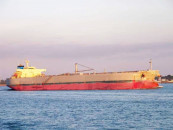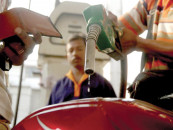Non-performing loans amount to Rs630b, up 5.8%
Share in total loans stands at 12.4%; major increase in NPLs came from agriculture

STOCK IMAGE
Non-performing loans (NPLs) amounted to Rs630 billion at the end of June, up 5.8% from a year ago.
Latest data released by the State Bank of Pakistan (SBP) shows NPLs at the end of the April-June quarter rose 1.6% over the preceding three-month period. Most of the increase in NPLs came from agriculture loans due to seasonal factors, the SBP said.
Speaking to The Express Tribune, Topline Securities analyst Umair Naseer said the rising NPLs did not pose any “major threat” to the banking system because they remained manageable given their share in total loans.

Instead of looking at bad loans in absolute terms, experts say NPLs should be analysed in view of their size within the total advances of the banking sector.
Commonly known as the infection ratio, the share of NPLs in loans of the banking sector at the end of the second quarter of 2015 was 12.4%. A year ago, however, the infection ratio was 12.8%. This implies that the overall share of NPLs has actually gone down over the last 12 months despite an uptick in bad loans in rupee terms.
Read: Country’s bigwigs get banks to write off their loans
According to the SBP, a more-than-proportional increase in gross loans resulted in the decline in the overall share of NPLs over the last year.
“The risks from rising NPLs remain low as long as interest rates are down in the economy,” Naseer said.
Problem areas
Out of the six major segments that receive advances, namely corporate, agriculture, consumer, SME, commodity financing and staff loans, the highest infection ratio was reported in the SME sector. Almost one-third (32.2%) of advances extended to SMEs were categorised as NPLs at the end of June. This is despite the fact that the share of advances extended to SMEs within the banking sector’s total advances was just 5.4% at the end of the last quarter.
The infection ratio in the advances extended to the corporate sector was 13.1%, which is notably higher than the overall infection ratio of 12.4% recorded on June 30. The corporate sector is the biggest borrower, with a share of more than two-thirds in the total advances of the banking sector.
 DESIGN: NABEEL AHMED
DESIGN: NABEEL AHMEDThe infection ratios at the end of June in the agriculture sector, consumer sector, commodity financing and staff loans remained 16.6%, 10.6%, 1.1% and 1.2%, respectively. Within the consumer sector, the highest infection ratio was recorded in mortgage loans, whose NPLs clocked up at a massive 24.8% on June 30.
A sector-wise breakdown of NPLs reveals the highest infection ratio was recorded in the textile sector (28.4%), which was followed by automobile/transportation (19.2%), electronics (16.8%), shoe and leather garments (15.9%), and cement (14.9%).
Read: Pakistan moves to pacify lenders, wants $1b loan
The minimum infection ratios were recorded in insurance (1.3%), sugar (4.8%) and production/transmission of energy (5.7%) at the end of June, SBP data shows.
Published in The Express Tribune, September 30th, 2015.
Like Business on Facebook, follow @TribuneBiz on Twitter to stay informed and join in the conversation.



















COMMENTS
Comments are moderated and generally will be posted if they are on-topic and not abusive.
For more information, please see our Comments FAQ